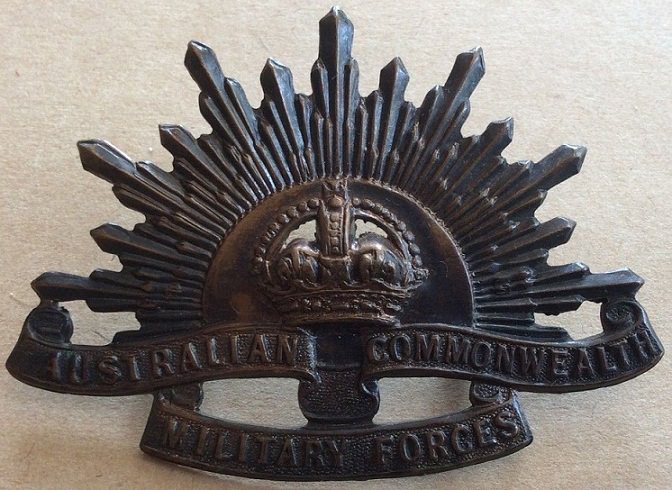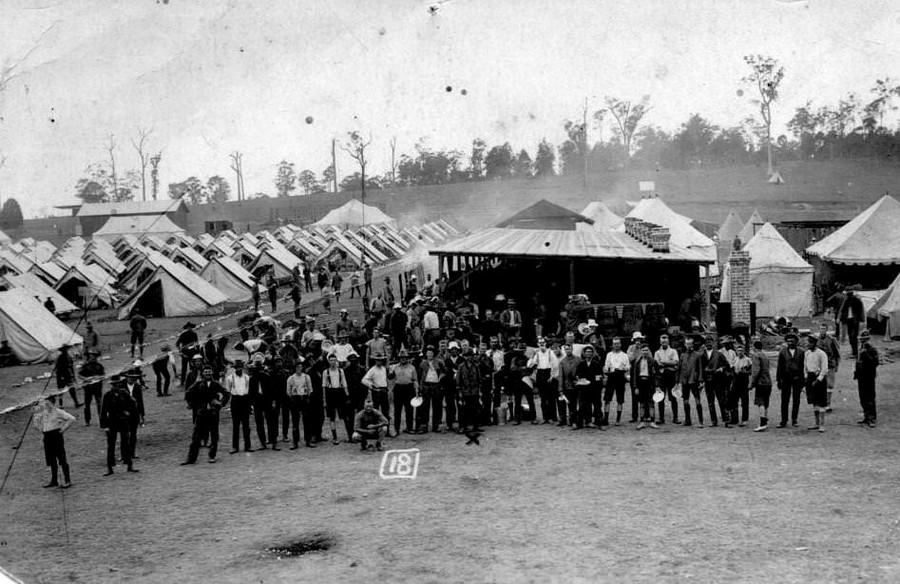
2nd BATTALION - 34th BATTALION A.I.F.
Captain: Robert Joseph STEWART. M.C. V.D. M.I.D
Born: 11th April 1894. Peak Hill, New South Wales, Australia. Birth Cert:27092/1894.
Married 1: 25th April 1925. St Augustine's Church, Neutral Bay, New South Wales, Australia.
Wife 1: Eileen Emily Stewart. nee: Elliott. (1893-19..)
Married 2: 21st March 1932. Wellington, New Zealand.
Wife 2: Eleanor Margaret Stewart. nee: Gibson. (1896-1959)
Died: 1st March 1988. Exeter, Devon, England.
Father: Andrew Stewart. (1863-1943)
Mother: Agnes Cardiff Stewart. nee: Mead. (1869-1953)
INFORMATION
Robert Joseph Stewart served with the 42nd Infantry CMF prior to his enlistment with the 2nd Battalion AIF on the 17th August 1914 and embarked for Egypt on the 8th December 1914. Robert was transported to the Dardenelles for the Gallipoli Campaign and was Wounded in Action on the 25th April 1915 where he received a Gun Shot Wound to his Right Leg and was evacuated to the 17th General Hospital at Alexandria before returning to Australia on the 9th September 1915 on board HMAT "Themistocles"

Robert re-enlisted with A Company 34th Battalion AIF on the 8th of February 1916 with the rank of Lieutenant and embarked from Sydney on board HMAT A20 "Hororata" on the 2nd May 1916 and was an original member of the Battalion. He disembarked at Plymouth, England on the 23rd August 1916 and was march in to the Durrington Army Camp at Lark Hill where he was promoted to Captain on the 2nd of September and proceeded overseas for France via Southampton on the 21st of November 1916.
6th June 1917.
BATTLE OF MESSINES
At 10 pm on the 6th June 1917, the Battalion left its billets fully equipped for the assembly Trenches. The order of march being "D", "A", "C" and "B" Companies. All went well until just before reaching Gunners Farm, where the enemy was putting a number of Gas Shells over and Masks had to be put on. Ploegsteert Wood and the back area were receiving particular attention. All Companies were greatly delayed of the amount of Gas in the Wood, which resulted in a number of men being gassed on the way up and many others were completely exhausted. A number of men lost their way in the darkness and smoke. Many could not see at all and had to be led back by their comrades. I many cases it was the blind leading the blind. After a grueling March, the first arrivals reached the Assembly Points 30 minutes before Zero Hour, while the last company arrived only 10 minutes before Zero.
On the 7th June, seven seconds before Zero Hour, which was 3.10 am, four Miles on our front were fired. There was a violent swaying as if an earthquake had taken place and the men in many instances were thrown together. The sky was brilliantly illuminated by the explosives and terrific Artillery fire, the sound of which could not be heard over the intense Machine Gun Barrage. The men left the Trenches immediately and there were a number of casualties on the parapet owing to the heavy enemy Barrage. The supports were also being shelled and the Reserve Company ("D") suffered considerable losses. The weather was hot and sultry and every one felt the trying march.
The Battalion passed through the 35th Battalion in the vicinity of the enemy's original Front Line, near Ulsters Switch. The enemy fire had been very severe up to this point and many men were lying here. A halt in our Barrage gave the Company Commanders an opportunity of Checking their Compass Bearings, defining their limits, and getting into position for the next advance. At the left of the Barrage a fine assault in complete waves was made. The men gained their objective in fine style behind a perfect Barrage and commenced consolidating their position. The mopping up of the Trench System was soon accomplished and many of the enemy were killed in their Dugouts. By 5.30 am fair cover had been obtained on the Consolidation Line. At 6.30 am Enemy Machine Guns were located in a rebout in "Uncertain Trench" and heavy Artillery was brought to bear on them with good results. By 7.30 am the Black Line was down to two thirds of its depth and linking up by Companies and Platoons were in progress. The enemy was seen moving along "Uncertain Trench" and also reports were received from the 33rd Battalion that the enemy was massing 1,000 yards in front. Reports of enemy movement continued throughout the early part of the morning, but Artillery co-operation helped to disperse the tendency and during the day no organised counter attack was attempted.
At 8.30 am the Line was well dug along the Front and affording excellent protection for the men. By 9.30 am only one gap remained between "A" and "B" Companies in the full length of the consolidation of the "Black Line" to the River La Douve. The Trenches being now well down, widening and sandbagging were now in progress and at 11.30 am showed very plainly in an Arial Photo as a good defensive Trench. There were repeated inquiries for water from the Front Line. Carrying Parties were suffering heavy casualties and were completely knocked up with the long distance.
At 1.40 pm Captain: Arthur Sidney WHITLOCK with "D" Company advanced to the Green Line, without Artillery support, owing to an alteration in the Zero Hour not reaching him. At 2.45 pm he reported by Runner that, having waited 30 minutes and no Artillery Barrage as arranged have been put down, he had advanced to the Green Line and was consolidating. by 7.30 pm all Companies reported that their positions were well consolidated. Just before midnight Captain: Arthur Sidney WHITLOCK was killed between the Green and Black Lines, and Captain: Robert Joseph STEWART took command of "D" Company. Patrols under the Scout Officers were sent out during the night and encountered enemy Patrols which were dispersed. A number of enemy patrols were also killed by our Machine Gun and Lewis Gun fire earlier in the night. At 5.00 am on the 8th June an enemy Plane over, flying low and inspecting our new position.
Our casualties to date had been 8 Officers and 236 other ranks. Captain: Arthur Sidney WHITLOCK and Lieutenant: 584 Leslie William Roy WARNER K.I.A. Lieutenant's Lieutenant: William Walter MATTHEWS Lieutenant: Hector Reginald McLEOD, Lieutenant: Bruce Gray McKENZIE, Lieutenant: Benjamin Greenup BRODIE, Lieutenant: Thomas Clifton PITTAWAY, and Lieutenant: Frederick Winn WALKER wounded.
MILITARY CROSS
Captain: Robert Joseph STEWART. 34th Bn AIF. At St YVES during the offensive of the 7th to the 10th June 1917, this officer Commanded a Coy with conspicuous success. He lost all his Officers during the first few hours of the attack, but captured his objective in face of heavy machine gun fire from GRAY TRENCH system. He handled his Coy with great efficiency and by eight and half hours after Zero he had so far consolidated the position that he was established in a good defensive system. During the night of the 7/8th June under orders from his C.O he also assumed command of "D" coy. (The Coy Commander having been killed) and completed the consolidation of its position of the GREEN LINE. His unbounded energy and personally acted as a stimulant to his men and he throughout inspired them with the greatest confidence. An attempted counter attack on the night of the 8/9th was quickly and resolutely repelled, several of the enemy being killed. His alertness during the offensive enabled him to supply his C.O with accurate and useful information as to the movements of the enemy in front.
London Gazette 25th August 1917. Page 8826 Position 4.
Commonwealth of Australia Gazette 20th of December 1917. Page 3383 Position 8.
MENTIONED IN DISPATCHES
Captain: Robert Joseph STEWART. 34th Bn AIF
London Gazette 3rd June 1919. Page 7256 Position 2.
Commonwealth of Australia Gazette 6th October 1919. Page 1467 Position 39.
12th January 1918.

Group portrait of the officers of the 34th Battalion at Meteren.
From left to right; back row: Lieutenant (Lt) Reuben Parkes (killed in action 30 March 1918); Lt L G Clarke; Lt Thomas Henry Britton MC (died of wounds 21 June 1918); Lt Stanley Herbert Delves; Lt Richard Paynter Stevens; Lt Joseph Michael O'Loughlin; Lt Laurence Sylvester McMahon; Lt Edgar Ernest Brunker; Lt Sydney Rogers Nicklin; Lt James Snedden; Lt George Edward Hodges; Lt Thomas Bellamy; Lt Russell Stanley Brown (killed in action 8 May 1918); Lt Arthur Baillie; Lt Francis Henry Samuel Lee; Lt Vincent Charles Callen (killed in action 20 August 1918); Lt Rex Bernard York; Lt Percival Thomas Coleman; Lt Albert Dowding (died of wounds 5 June 1918). Front row: Captain (Capt) Telford Graham Gilder MC; Lt Jeffrey Monfries; Capt Alexander Warren MacDonald (killed in action 30 August 1918); Capt Norman Sydney Caines MC and Bar; Lieutenant Colonel (Lt Col) Ernest Edward Martin DSO; Capt James Stewart MC; Capt Herbert Henry Percy MC; Capt Benjamin Greenup Brodie (killed in action 5 March 1918); Lt Edward StClair Forbes; Lt Frank William Gifford; Capt Chaplain John Calder.

VOLUNTEER OFFICER'S DECORATION
Major: Robert Joseph STEWART. Australian Corps of Engineers. (Field Units) 2nd M.D
Commonwealth of Australia Gazette 1st May 1930 No: 33. page 878
Family Information
Robert was a single 24 year old Civil Engineer from Parkes, N.S.W. upon enlistment. His father Andrew Stewart was his next of kin from Rosedernate Road, Orange via Parkes, N.S.W. Robert served with the 42nd Infantry Battalion prior to WW1.

Agnes Cardiff Stewart. nee: Mead (1869-1953)
Military Records






































 World War 2 Records
World War 2 Records










© Commonwealth of Australia (National Archives of Australia)
Under Construction; 13/09/2013-09/10/2015.






































